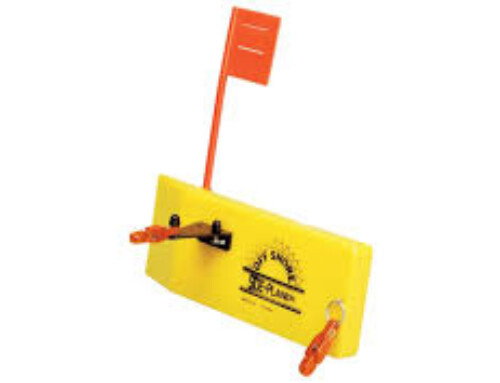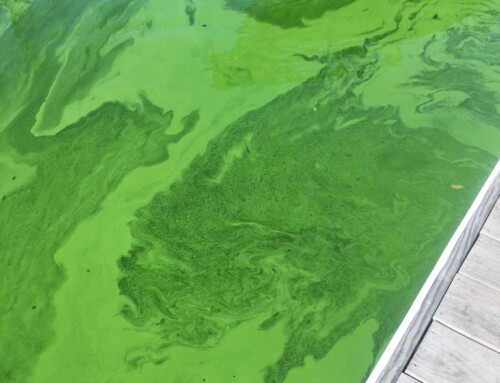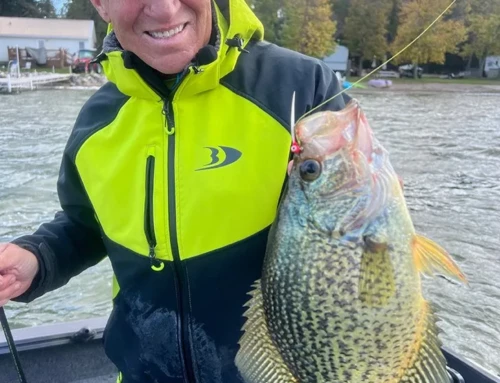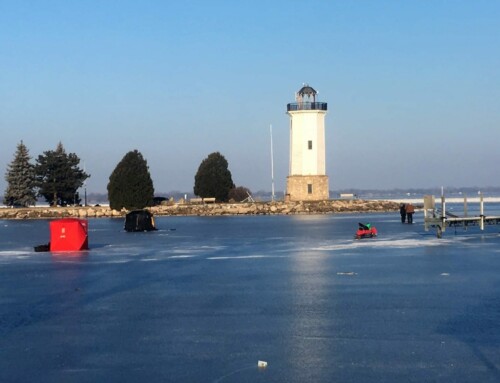The dog days of summer are upon us in the Lake Winnebago region, with some excellent weather and occasional weather fronts passing through the area. The main lake has a distinct algae bloom in the water, with a stained appearance to the water column. Water temps have remained in the upper 70’s to low 80’s over the past several weeks. Bugs have been the main story line, with a second lake fly hatch in the northeast corner of the lake and small black flies over the majority of the lake. At times, the bugs made any activity on the lake nearly impossible to achieve, especially during light winds.
With the massive hatch of bugs, many fish have been gorging on the flies. Given the massive school of walleyes this year along the northeast shore, the fly hatch in that region should come as no surprise, as the walleyes have been feeding on this food source all summer. Needless to say, fish with full stomachs are unlikely to chase baits, making the past few weeks subpar for fishermen.
Most anglers are focused on perch. The western reefs and southeast corner of Lake Winnebago are the most popular areas, with the northeast corner gaining popularity.
Perch fishing has been tough the past two years. Many anglers ask why this is happening. The dominant reason is poor year classes, with the last several seasons with extremely weak hatches. Typically on the Winnebago system most of the perch are under four years of age. The 2013 creel study indicated that over 97% of the fish in the system were under 4 years old.
Why are 97% of Lake Winnebago perch under 4 years old? Perch are a mainstay of the predator fish diets, and with more predators (plus less forage) in the system the perch become a larger part of the food chain. Fishermen exploitation rates were very high several years ago which in turn reduced populations. Additionally, several strong ice fishing seasons also contributed to larger harvest of yellow perch.
Perch like any other fish species on the Lake Winnebago system tend to run in population cycles. We are currently on the low end of the cycle for bluegill and perch, with crappies concluding a peak.
What’s working? Move often, and once you find them fish hard. Hellgrammites worked off the bottom of the lake bed is the best method currently. As noted above, bugs are the key food source right now, and hellgrammites are an attractive option. Secondary choices would include small worms or tiny bits of night crawlers.
The perch are roaming, so a trend today does not mean they will be there tomorrow. These fish are barely biting, and expect tiny indicators of a strike. Attention to your line or rod tips is critical to catch rates. In essence, after gorging at the all you eat buffet, you tend to either pass on that last piece of cake or you may just nibble at it.
Walleyes are still being caught in lower numbers. It is a tough bite for trollers, but weed fishermen continue to find fish in the weed pockets.
White bass schools have formed in several parts of the system. The HWY 41 Bridge and Fox River have huge schools moving through the area. Just about every cast until your arms fall off, when you find them. Another school has been roaming in the Fond du lac Area, near Lakeside Park.
I found a pocket of smallmouth bass off the Gladstone/Deadwood point area this past week, attacking Reef Runner baits along with Salmo hornets. Size was just average for the Winnebago system.
Don’t forget to sign up to fish the multi-species tournament in Beaver Dam, WI with Christian Laetnner (Duke Basketball legend). $30 a head. Sunday August 23rd. http://www.beaverdamchamber.com/pdfs/hookshoops.pdf Have a great week!





